Johnstown Castle is an historic building within 150 acres of woodland and gardens in County Wexford. The first castle built on the estate dates back to Norman times. The castle was bought by the Grogan family in 1692 who later married into the Fitzgerald family in the 1800s. The present castle and gardens were designed by Daniel Robertson in the 1830s.
The last owner to live in the castle was Lady Maurice Fitzgerald. She died in 1942 and the estate was handed over to the Irish state in 1945 where it was used for agricultural research. Today Johnstown Castle is home to the Department of Agriculture & Forestry as well as the Environmental Protection Agency (EPA). It also houses the Irish Agricultural Museum.
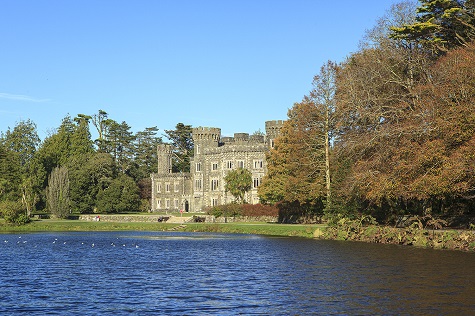
The castle at Johnstown estate was owned by the Grogan and Fitzgerald families
In 2019 the Irish Heritage Trust took charge of running the gardens. Back then a total revamp of the amenities was undertaken. This included building a visitor centre and employing a full time gardener. The upgrade meant that the entrance fee was increased to enter the estate, which, initially, led to some objections but almost all of the objectors have since become members after they saw that the money was being reinvested back into the estate. Now more people visit the gardens than ever before.
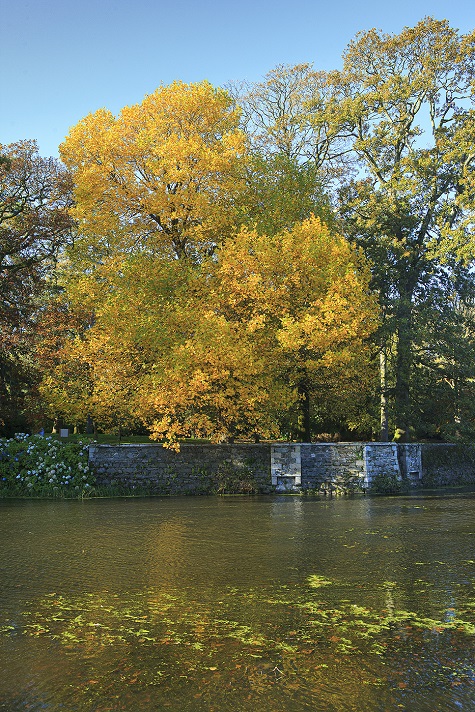
Autumn is one of the most colourful times in the gardens
The head gardener at Johnstown Castle is Ciarán Fitzgerald, who coincidently shares the same family name of the last owner of the estate but they are not related. “The Fitzgerald family flag is often flown on the castle to celebrate the former owner’s birthday. It’s a strange feeling seeing your family flag flying as you go about your daily chores” said Ciarán.
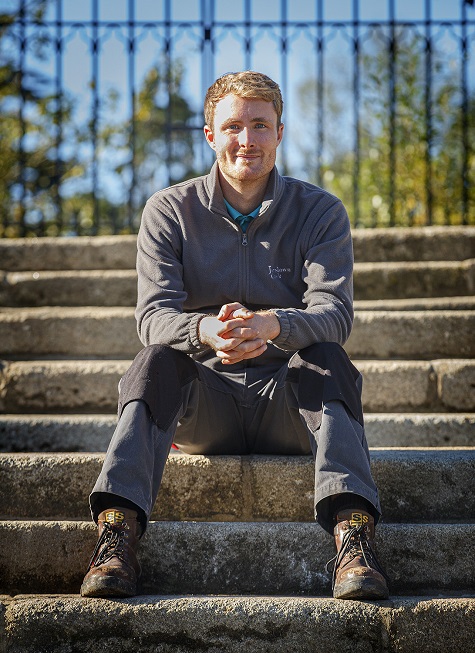
Head Gardener, Ciarán Fitzgerald
Ciarán is a keen cyclist and cycles 9 miles to work most days. He is very passionate about his work and loves every minute of it. You only have to see his Instagram posts to see the enthusiasm he has for his work. He would be well worth following.
Ciarán started working at Johnstown in 2019. Prior to that he was gardener at nearby Kilmokea Country Manor and Gardens. In those two years Ciarán has already left his mark on the gardens. He has started many projects there including redesigning the sunken garden and establishing wild flora in the woodlands. His next project is to redesign the walled gardens and restore the old greenhouse within the walled gardens.
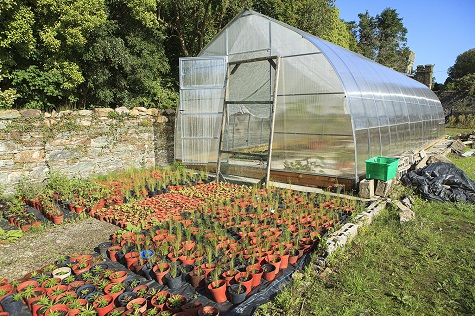
The nursery. It is hoped that plants will be propogated and made available for the public to purchase
The sunken garden
In 2020 funding was secured to restore the sunken garden. The original sunken garden contained formal box hedging of many shapes and sizes. Recreating this would be too costly to maintain so Ciarán was given a free hand to redesign the sunken garden himself. He has chosen a design based on old Irish and Celtic shapes that were typical during pagan times. Restoration of the sunken garden was a two phase project. Phase 1 has already been completed. This involved draining the ground, digging out and edging the patterns of the paths, using 22 tons of gravel. Phase 2 will see the completion of the pathways and the creation of a 6 metre central pond with kirbing around it. When completed this will be a lovely attraction for visitors and a great legacy for Ciarán. Interestingly there are some redwood trees growing near the sunken garden and when restoration work began, the scrub within the woodland around the sunken garden was cleared, revealing more redwood trees.
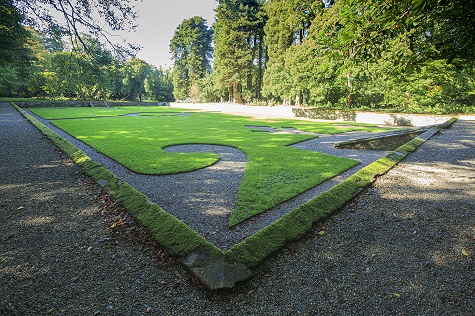
The sunken garden is Ciarán’s own design of Irish and celtic patterns
The walled garden
The walled gardens at Johnstown Castle were originally laid out between 1844-1851 and are divided into two sections, each section covering an area of 2 acres. The upper section is closed to the public. It has apple trees, blueberry bushes and some invasive willows. I was surprised to hear from Ciarán that the planting within the walled gardens was only done within the last 70 years or so. He hopes to do a complete makeover of the planting scheme there, including redesigning the herbaceous border; removing the griselinia hedge, which will give better views of the greenhouse; changing the path layout and introducing a culinary herbaceous border in the upper walled garden, which would include vegetables such as artichokes, herbs and asparagus . “Like the sunken garden I have been given a free hand to do a makeover of the walled gardens. Regarding the herbaceous border, I will be influenced by the Dutch garden designer Piet Oudolf, who prioritizes the seasonal life cycle of a plant over decorative considerations and uses bold drifts of herbaceous perennials and grasses in a prairie style of planting” said Ciarán.
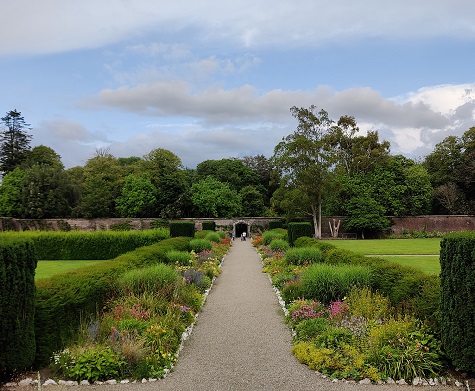
The herbaceous border will be modified in the style of the Dutch garden designer Piet Oudolf
The greenhouse
Within the walled gardens lies the ruins of a greenhouse. This will be part of a restoration project which, when complete, Ciarán hopes to use as a propogation area where plants can be grown from seed or cuttings and planted within the estate. He would also like to sell some of these plants to the public. The view of the greenhouse was partially blocked by two griselinia hedges which were removed during the past two weeks with the help of a shredder.
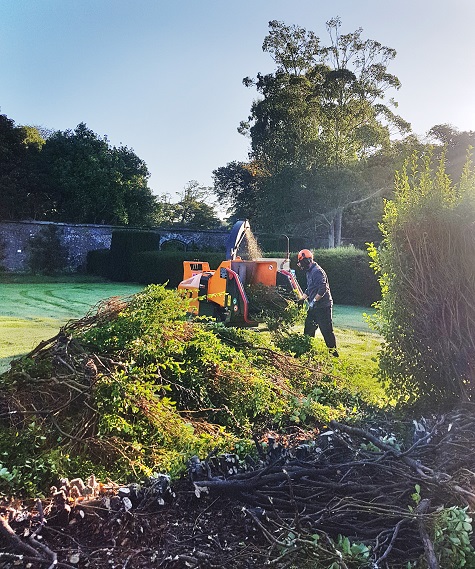
Ciarán is busy shredding the griselinia hedge which will allow for better views of the Greenhouse. Photo Ciarán Fitzgerald
While digging the ground in an area behind the old work buildings Ciarán discovered some old stonework which seemed out of place and unusual. It was later revealed that these stones were part of the foundation of the original greenhouses built in the1840s. As luck would have it there was an old photograph on the estate showing the original greenhouses. Experts say that these foundations are in such good condition that they can be used to reconstruct the old greenhouse on.
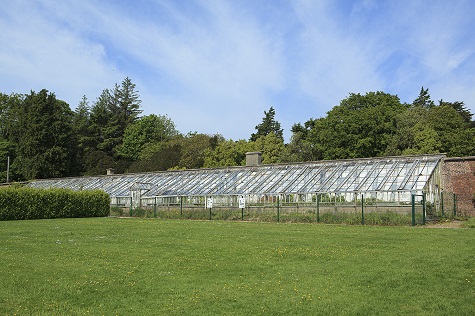
The magnificant greenhouse that will soon be restored to its former glory
Rewilding the forest
Earlier this month over 5500 native woodland bulbs were planted under the trees within the estate. These included native bluebells, wild cyclamen and snowdrops. They will give a great display of colour in early spring. Certain areas of the estate have been left grow wild and unmown so as to encourage wild flowers establish. These areas will be mown soon and removed so that some wild flower seeds can be sown, such as yellow rattle. There was a sense of excitement in his voice when he talked about this, as he was expecting delivery of a new flail collector mower, which will be used to cut the meadow. “This new machine is a major step forward in the development of our meadows. It will enable us to remove the grass from the meadows when they get their annual cut. This prevents the build up of nutrients in the soil. The lower nutrient levels are favoured by native wildflowers, making it easier for the meadows to develop. I can’t wait to try it”, said an excited Ciarán.

Converting part of the forest areas to wild flower meadows has proven popular to visitors
I wondered how could one man undertake such projects and still maintain the grounds to such a high standard? “When I started working here I was the only paid gardener. We introduced volunteers, many of whom have gardening experiences and skills - we even have a pruning expert. Today we have around eighteen volunteers. Half of them come in for four hours on Thursday and the other half for the same time on Friday. They are a great bunch of people and I would be lost without them” said Ciarán. Earlier this year an assistant gardener was employed. His name is Peter Jordan and he now helps with Ciarán with the gardening tasks. Lockdown was a tough time for Ciarán as the volunteers were not allowed to come in and help. “It was a long five months without my volunteers. It was hard work trying to keep the place tidy without them so their return was a welcome sight” said Ciarán.
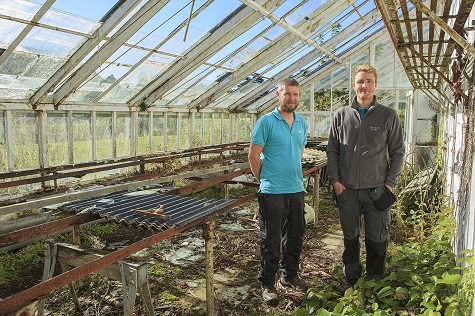
Assistant gardener Peter Jordan (left) and Ciarán Fitzgerald in the old greenhouse
The grass maintenance around the estate was given to an outside contractor but this will now be done in-house. For that reason a third gardener will be employed soon to help with the mowing of the lawns.
A familiar sight around the estate are peacocks but there is a lot of wildlife around as well. Only in the past few years woodpeckers have taken up residence there. You can hear them banging on tree trucks during the spring. There are also pine martins and red squirrels. Otters have been seen around the lakes and the odd deer rambles in from the nearby hills. Mandarin ducks are also residents on the estate.
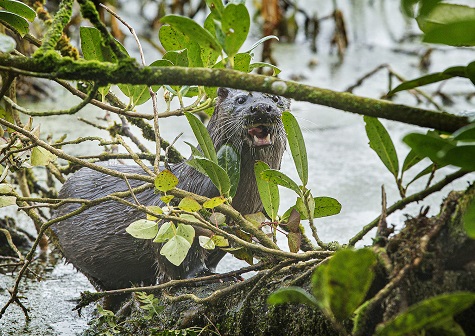
Otters were spotted last spring in one of the lakes
It was an absolute pleasure getting the tour of the gardens with Ciarán. I didn’t realise how much and varied his work is. He has so much enthusiasm and loves what he does. He can’t hide his love for the job. It would be well worth following him on Instagram. Search Johnstowncastleheadgardener. I promise you it will be well worth it.